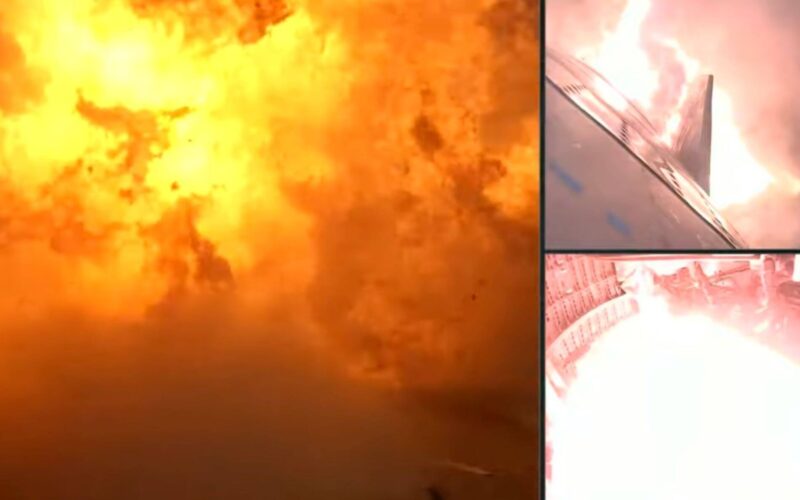On December 9, 2020, a prototype of SpaceX Starship launch vehicle disintegrated upon landing, but the company calls the test a success. Why?
It was the fifth free flight test for the type, and the first one when the vehicle – Starship SN8 – in its shape resembled the projected production variant. It was also the first high-altitude test, with the prototype reaching the altitude of 12.5 kilometers (7.8 miles) and remaining airborne for almost 7 minutes.
In the air, Starship performed horizontal flight, turned its engines off and on again, and positioned itself vertically in preparation for a landing. Complete reusability of both stages, as well as an ability to land and take off on low-gravity celestial bodies – such as the Moon and Mars – is one of the most advertised features of the spaceship.
But the landing did not go smoothly. Fuel system malfunctioned. “Fuel header tank pressure was low during landing burn, causing touchdown velocity to be high,” – as SpaceX founder Elon Musk tweeted some time later. The spaceship collapsed upon touchdown, and went up in flames.
Starship landing flip maneuver pic.twitter.com/QuD9HwZ9CX
— SpaceX (@SpaceX) December 10, 2020
But as the smoke was clearing, the company swiftly declared the test a success. A graphic on the stream of the test congratulated the team, and called the test “awesome”.
Why was it so?
First off, the tests ending in spectacular explosions are nothing new for SpaceX. In fact, it is already the 7th of 13 Starship prototypes destroyed in one or another kind of testing. The company revels in publicity that the spectacle of rapid disassembly of their prototypes deliver, as can be noticed from the tweets about the event.
Also, the landing was just one of the things the new prototype tested. The fact that it managed to take off, reach high altitude and perform aerial maneuvers was already more than the company initially expected.
In fact, before the test Musk said that the possibility of completing all testing objectives is no larger than 1 in 3, a figure which should be taken in the context of usual optimism of the company’s public statements.
The prototype was not intended to be reused, and would likely be scrapped in case of successful landing, just as the surviving ones before it had been.
Finally, the test – and the buzz that followed its spectacular finale – came as the first positive note in a streak of failures SpaceX encountered before, as four static tests in a row, conducted beforehand, ended unsuccessfully. The initial timeline, provided by Musk in mid-2019, set the first high-altitude test before the start of 2020, but a row of failures caused a row of delays, a hole SpaceX managed to climb out of only after the spectacle of November 9, 2020.

